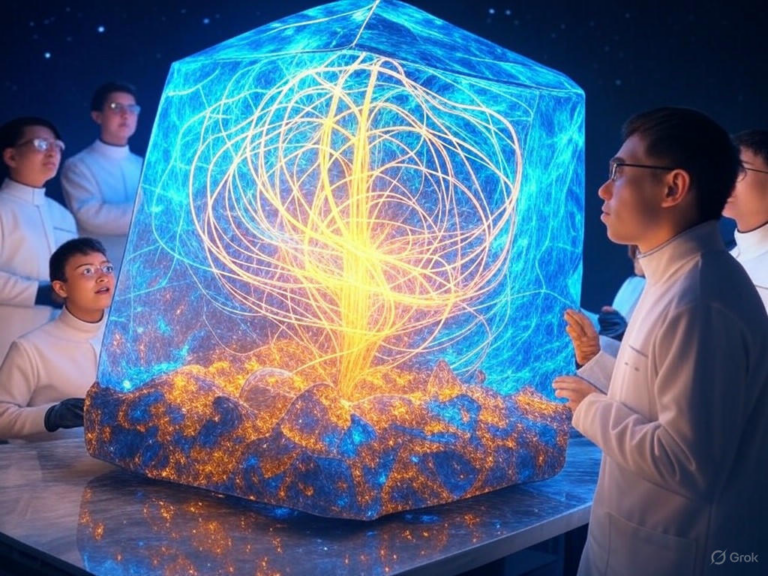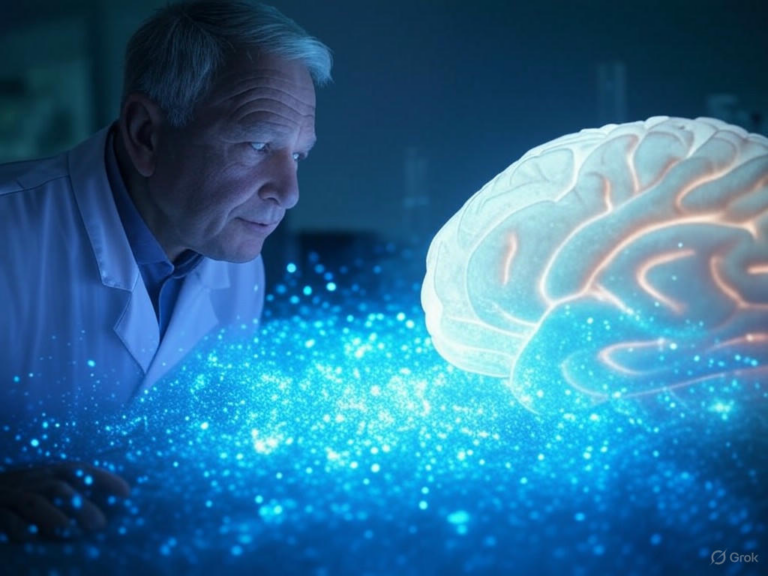
Quantum Biology: Protons Follow Quantum Rules in Biological Systems
Understanding Quantum Biology
Have you ever wondered how the tiniest particles in our bodies could bend the rules of physics? Quantum biology explores exactly that, showing how subatomic players like protons and electrons operate under quantum mechanics to drive life’s core processes. In this field, quantum biology helps explain why particles behave in ways that classical physics can’t predict, such as facilitating energy transfer in cells or even sparking genetic changes.
These quantum effects are evident in everyday biological functions, from respiration to photosynthesis. For instance, imagine electrons zipping through a cell’s machinery with incredible precision—this is quantum biology at work, ensuring that protons move efficiently to power our cells.
Quantum Mechanics in Living Systems
Wave-Particle Duality and Its Role in Proton Movement
Picture this: a proton acting like both a solid particle and a rippling wave, depending on its surroundings. This wave-particle duality is a cornerstone of quantum biology, enabling phenomena like quantum tunneling that let protons slip through barriers effortlessly. In biological systems, this means protons can transfer energy in ways that make processes super-efficient, almost like a shortcut in nature’s playbook.
Quantum tunneling, for example, allows these particles to bypass energy hurdles that would stump them in a classical world. It’s not just a lab curiosity—it’s happening right now in your cells, optimizing reactions that keep you alive. What if we could harness this for everyday tech? That’s the exciting potential of quantum biology.
Interactions in Open Quantum Systems
Life doesn’t exist in a vacuum; our cells are open quantum systems, constantly interacting with their environment. This openness means protons and electrons are influenced by vibrations and other forces, making quantum biology essential for understanding how they navigate complex structures like enzymes or DNA. Think of it as a dynamic dance where every step is fine-tuned by quantum rules.
These interactions highlight why quantum biology is key to decoding biological efficiency. By studying them, scientists are uncovering how protons maintain order amidst chaos, potentially leading to breakthroughs in health and energy.
Proton Tunneling in Mitochondria and Energy Conversion
Dive into the heart of a cell, and you’ll find mitochondria buzzing with quantum biology. Here, proton tunneling plays a starring role in the electron transport chain, helping create the energy currency ATP with jaw-dropping efficiency—up to 70%. This process lets protons dart across membranes, defying classical limits and powering our daily activities.
- Proton tunneling cuts through energy barriers, making mitochondrial function a masterclass in quantum biology.
- It ensures ATP synthesis is not only fast but also incredibly precise.
- Ever feel energized after a good meal? Thank quantum biology for that mitochondrial magic.
This efficiency outshines human-made engines, raising the question: how can we mimic quantum biology in sustainable tech? For now, it’s a reminder of nature’s ingenuity.
Proton-Coupled Electron Transfer and Its Evolutionary Impact
In quantum biology, proton-coupled electron transfer (PCET) is like a synchronized swim, where protons and electrons move in tandem to boost enzyme reactions. This mechanism leverages quantum effects, such as hydrogen tunneling, to speed up processes that drive everything from metabolism to DNA repair. It’s a prime example of how quantum biology shapes life’s building blocks.
But here’s where it gets intriguing: these quantum-driven transfers might trigger DNA mutations, adding a twist to biological evolution. Imagine a single proton’s quantum leap sparking the diversity that helps species adapt—it’s like evolution’s secret weapon. Could this be why life is so resilient?
- PCET enhances reaction speeds, thanks to the quirks of quantum biology.
- Proton tunneling may introduce random mutations, fueling genetic variety.
- This quantum influence could be key to understanding how species evolve over time.
Exploring Wider Impacts of Quantum Biology
Quantum biology isn’t limited to energy and mutations; it touches processes like photosynthesis and even our sense of smell. In photosynthesis, for instance, energy moves with laser-like accuracy due to quantum coherence, making plants far more efficient than we once thought. This shows how quantum biology weaves into the fabric of life.
Key Examples of Quantum-Driven Processes
- Photosynthesis: Quantum biology ensures energy transfer is nearly flawless in plant cells, capturing sunlight with minimal loss.
- Vision: Your eyes detect faint light through quantum sensitivity, illustrating quantum biology in action.
- Magnetoreception: Some animals, like birds, might use quantum entanglement for navigation—another wonder of quantum biology.
These examples prompt us to ask: what other hidden quantum tricks are at play in nature? From sensing the world to adapting to it, quantum biology is everywhere.
Debates in Quantum Biology: Design or Chance?
Scientists debate whether quantum biology is a product of evolution or just a happy accident. For protons in biological systems, tunneling might be an evolutionary advantage, or simply a side effect of atomic scales. Either way, it’s fascinating to consider how quantum biology could have shaped life as we know it.
What are your thoughts—did nature intentionally harness quantum biology, or is it pure coincidence? This ongoing discussion keeps the field alive and evolving.
Quantum Biology’s Influence on Modern Medicine
Innovations in Quantum Sensors for Health
Quantum biology is stepping into medicine with tools like quantum sensors, which detect subtle molecular changes for early disease spotting. This could transform cancer diagnostics, catching issues before they escalate. By applying quantum biology principles, we’re moving toward personalized healthcare.
Imagine routine checks that use quantum biology to flag problems early—it’s a game-changer for prevention.
Advancements in Quantum-Enhanced Imaging
Techniques like quantum-enhanced MRI are pushing imaging to new heights, revealing atomic details that classical methods miss. This leap in quantum biology could refine treatments for complex conditions, offering clearer insights into diseases.
With quantum biology driving these tools, doctors might soon tailor therapies with pinpoint accuracy. It’s an exciting frontier for patient care.
Looking Ahead with Quantum Biology
- Quantum sensors could become standard for proactive health monitoring.
- Custom drugs inspired by quantum biology might target issues at the molecular level.
- Precision treatments using quantum effects could minimize side effects and maximize results.
As quantum biology advances, it’s opening doors to a healthier future. What innovations do you think we’ll see next?
The Future Shaped by Quantum Biology
Quantum biology is more than a scientific curiosity—it’s a bridge between the microscopic world and our everyday lives. From protons tunneling in mitochondria to potential medical revolutions, this field reminds us that life’s secrets are written in quantum code. As we uncover more, we’re not just observing nature; we’re learning to work with it.
So, what’s your take on quantum biology? Share your thoughts in the comments, explore more on our site, or spread the word—let’s keep the conversation going!
Frequently Asked Questions
What is quantum tunneling and its importance in quantum biology?
Quantum tunneling lets protons pass through energy barriers impossible in classical physics, making it vital for efficient processes in quantum biology, like those in mitochondria.
Can quantum effects lead to mutations?
Yes, quantum biology suggests that effects like proton tunneling can cause DNA mutations, potentially driving evolution and diversity in species.
Is quantum biology used in medical tech?
Absolutely—quantum biology is inspiring tools like sensors and imaging for better diagnostics and treatments in modern medicine.
Conclusion
In quantum biology, protons following quantum rules reveal the elegant mechanics behind life, from energy conversion to evolutionary changes. This growing field promises not only deeper insights but also practical advancements that could redefine health and technology.
References
Here’s a list of sources used for accuracy and depth:
- Quantum Biology. Wikipedia. https://en.wikipedia.org/wiki/Quantum_biology
- The Future of Quantum Biology. Royal Society Blog. https://royalsociety.org/blog/2019/02/the-future-of-quantum-biology/
- Frontiers in Quantum Science and Technology. https://www.frontiersin.org/journals/quantum-science-and-technology/articles/10.3389/frqst.2024.1466906/full
- Derek S. Wang on Quantum Biology. https://derekswang.com/project/quantumbiology/
- Arturo Robertazzi on Quantum Biology. https://www.arturorobertazzi.it/2023/05/quantum-biology-the-fuzzy-connection-between-quantum-mechanics-and-living-things/
- Andrew G. Gibson on Quantum Biology in Medicine. https://andrewggibson.com/2024/07/21/quantum-biology-in-medicine/
- Scott Aaronson’s Blog. https://scottaaronson.blog/?p=1753
- YouTube Video on Quantum Biology Debates. https://www.youtube.com/watch?v=bLeEsYDlXJk
quantum biology, protons, quantum tunneling, biological systems, mitochondrial function, electron transport chain, DNA mutations, quantum mechanics in life, medical quantum applications, evolutionary quantum effects







